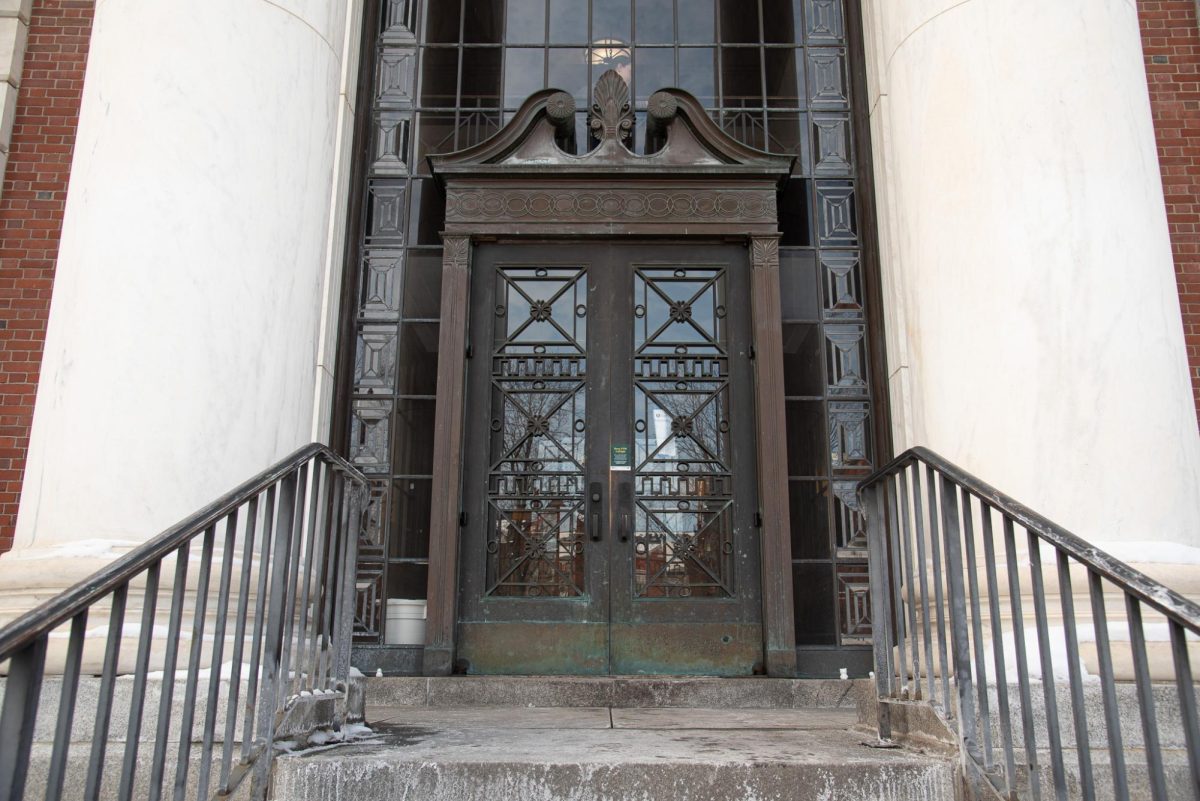Did you know UVM has about 500 laboratories using chemicals? That means a lot of lab coats, a dizzying variety of chemicals, and some significant health and financial risks. This semester, students in an Environmental Management Systems class offered through Environmental Studies examined the University’s response to the environmental challenges these chemicals present in order to assess UVM’s system for handling lab chemicals. Here is what they found.
Both class and research laboratory experiments at the university use hundreds of different chemicals in endlessly changing experiments, generating important new knowledge for society-as well as presenting risks for those who handle the chemicals, from the time they are purchased until they are properly disposed of.
The most significant potential price for improper handling of chemicals is physical injury to people. Lab workers themselves are at the greatest risk from the hazards of the chemicals they use, but UVM staff who maintain the buildings, collect the waste chemicals, and work in the buildings where this work is done also can feel the effects of a chemical spill or leak. Fortunately, most of these hazards are appropriately managed by following careful procedures for the use of these chemicals.
In addition to the physical hazards of chemicals, there are government regulations that must be carefully followed. Since 1993, Yale, Brown, the University of New Hampshire and MIT have all paid a heavy financial price for poor handling of chemical wastes and the associated paperwork. EPA fines at these institutions have been in the hundreds of thousands of dollars, often for paperwork concerns-improper labeling or paperwork, storing a chemical for too long-that resulted in no actual harm to human health or the environment.
Fortunately, in the past 15 years, there have been no fines at UVM. The Environmental Safety Facility, the office in charge of ensuring that environmental regulations are followed in the labs, is working to keep it that way. ESF staff strive to protect human health and the environment by training lab workers, providing laboratory inspection checklists, visiting laboratories to review their safety practices, and monitoring progress in reducing the amount of chemical wastes generated by laboratories.
In order to help deal with the paperwork issues that have done in other campuses, in 2000 UVM, along with Boston College and the University of Massachusetts Boston, joined with the EPA and states of Vermont and Massachusetts to test an alternative regulation for laboratory waste. This program, called Lab-XL includes a formal institutional commitment to continuous improvement of the program as measured by nine indicators, meticulous record-keeping, and aggressive institutional oversight of hazardous laboratory work. The ESF also goes beyond meeting government requirements in several ways. For example, to reduce waste from unused chemicals- which represents 40% of lab chemical waste nationwide-the ESF buys commonly used chemicals in case quantities and sells them to labs in small quantities at bulk prices. As a result, unused chemicals comprise only about 15% of lab waste at UVM.
In addition, lab worker training is key to the success of the safety program, since 40% of the lab personnel change every two years. After seeing positive results from an active training program in awareness surveys of laboratory workers, while recognizing the ongoing challenges presented by the continuing increase in the amount of research at UVM, the ESF recently hired an additional person to increase its training and outreach to laboratories.
It’s hard to measure performance when it comes to lab chemical handling, but there are good signs at UVM. Most important is minimizing the number and severity of worker injuries. Another hopeful sign is that while research dollars have doubled since 2000, the quantity of waste has grown only 20%. Improving scores on lab audits over the last 5 years also indicate that laboratories have become safer to work in. These improvements have led to EPA support for continuing this new regulatory program and consideration of expanding it nationwide.
It’s good to know that the University and lab workers are taking chemical safety so seriously. For information on general lab safety issues at UVM see http://esf.uvm.edu, Specific details of the Lab-XL project can be found at http://www.c2e2.org/labxl.











